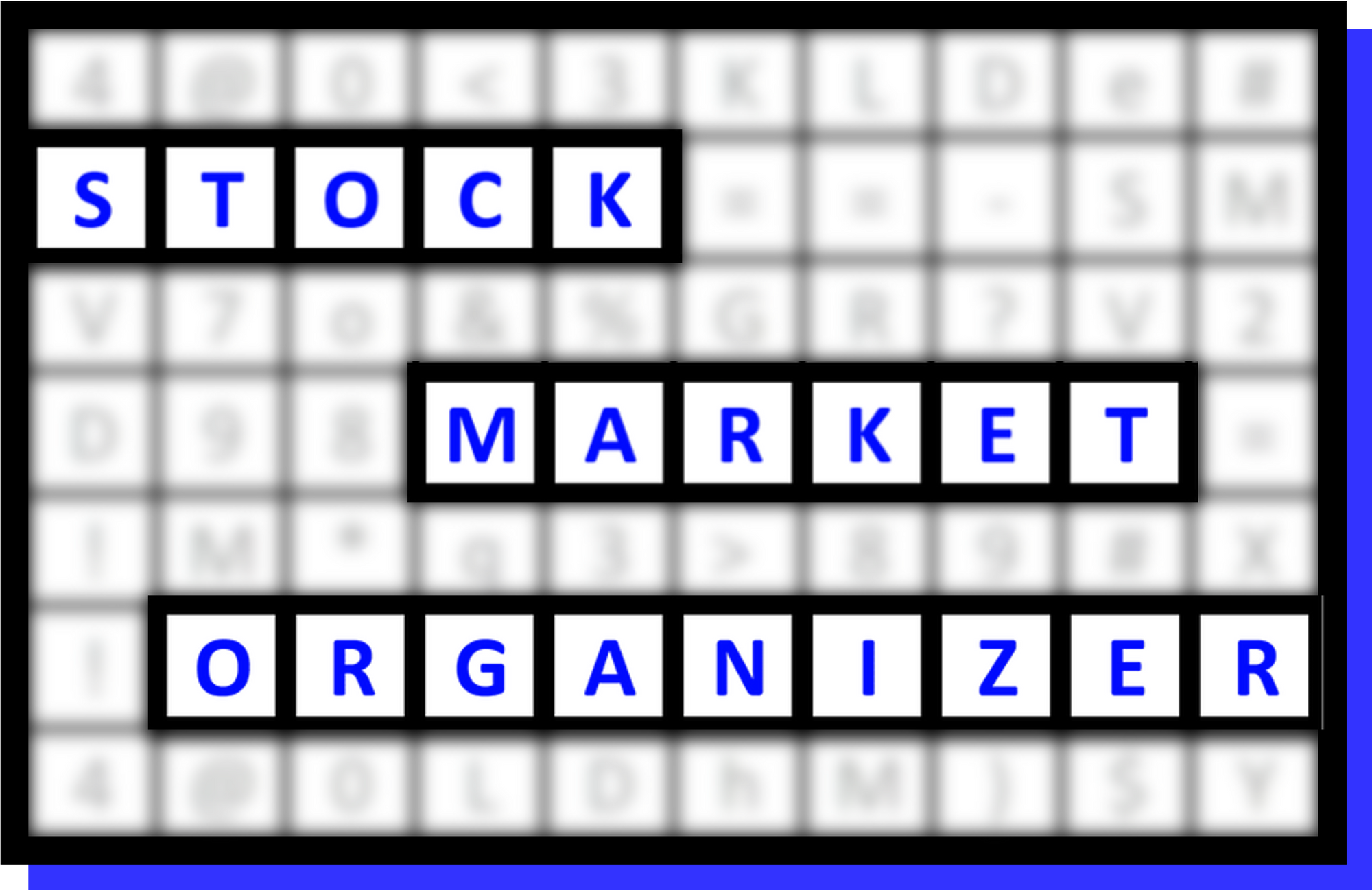SMO System: buy strength, sell weakness, control risk
Following is a summary of the Stock Market Organizer system for profiting in the U.S. stock market.
Note that specific market conditions must be met to allow individual position entry, only in the objectively-determined direction of market tides. When in a position, market conditions are ignored and only the individual stock’s strength determines exit. Individual stock strength can transcend market conditions and so long as the stock remains objectively strong the position will be held. Only when capital is available for new positions do market conditions hold relevance.
No system will experience 100% wins. The explicit goal is to take advantage of time-tested concepts (trend following and momentum) and keep all losses small so no individual position ever turns into a catastrophic loss, while looking for significant winners that will offset the losses even with a less than 50% win rate.
Markets – What to buy or sell
- Only U.S. equities with minimum liquidity and price thresholds
Position Sizing – How much to buy or sell
- Max 1% of total account equity risked per position
- Based on a stock’s volatility using a 2.5 multiple of the 21-day Average True Range (ATR)
- Example 1: for every $100k portfolio size, max risk 1% x $100,000 = $1,000. Assume a target stock has a $20 price per share and a $1.00 21-day ATR. The risk per share is 2.5 ATR multiple x $1.00 ATR21 = $2.50. Divide $1,000 risk per position by $2.50 risk/share = 400 shares purchased. 400 shares x $20/share = $8,000 position size.
- Example 2: Target stock has a $20 price per share and a $2.00 21-day ATR. The risk per share is 2.5 ATR multiple x $2.00 ATR21 = $5.00. Divide $1,000 risk per position by $5.00 risk/share = 200 shares purchased. 200 shares x $20/share = $4,000 position size. Note the position size is automatically reduced for more volatile stocks.
Entries – When to buy or sell
- Only when market is in “no new shorts” condition, buy stocks rated Strongest (1st of 9 strength levels) in strengthening sub-industries
- Only when market is in “no new longs” condition, sell short stocks rated “Weakest” (9th of 9 strength levels) in weakening sub-industries
- Entries are at the market. There is no targeted Reward:Risk ratio. Philosophically, the intended holding period is for however long the stock is strong, which is determined based on the stock’s price action after entry. (Buy strength, sell weakness.) The targeted returns are high double digit+ percentage returns (into triple digit and more if possible). Therefore nitpicking over pennies, dimes, and quarters of an entry price (via only buying on pullbacks, or focusing on specific times of day) is immaterial and believed counterproductive due to unnecessary complexity.
- No pyramiding into existing positions. Available capital is deployed only into new positions.
Stops – When to get out of a losing position
- Exit when the stop is violated on a closing basis.
- Exit at the market at the open of the next trading day that the stop was violated. Per above entry rules, ignore nitpicking by seeking to save pennies, dimes, and quarters. These are immaterial in the long-run context of this system and its return goals.
- Option to exit at the market late in the day of when the stop is violated and it appears likely the close will be below the violated stop.
- The initial stop is the entry price less the 2.5x ATR21 multiple. For Example 1 above with a $20.00 entry price, the initial stop is $20.00 - $2.50 = $17.50/share. The Example 2 stock is $20.00 - $5.00 = $15.00.
- Trailing stops are at the higher of the previous stop and yesterday’s high less the current 2.5x ATR21 multiple.
- No partial exits.
